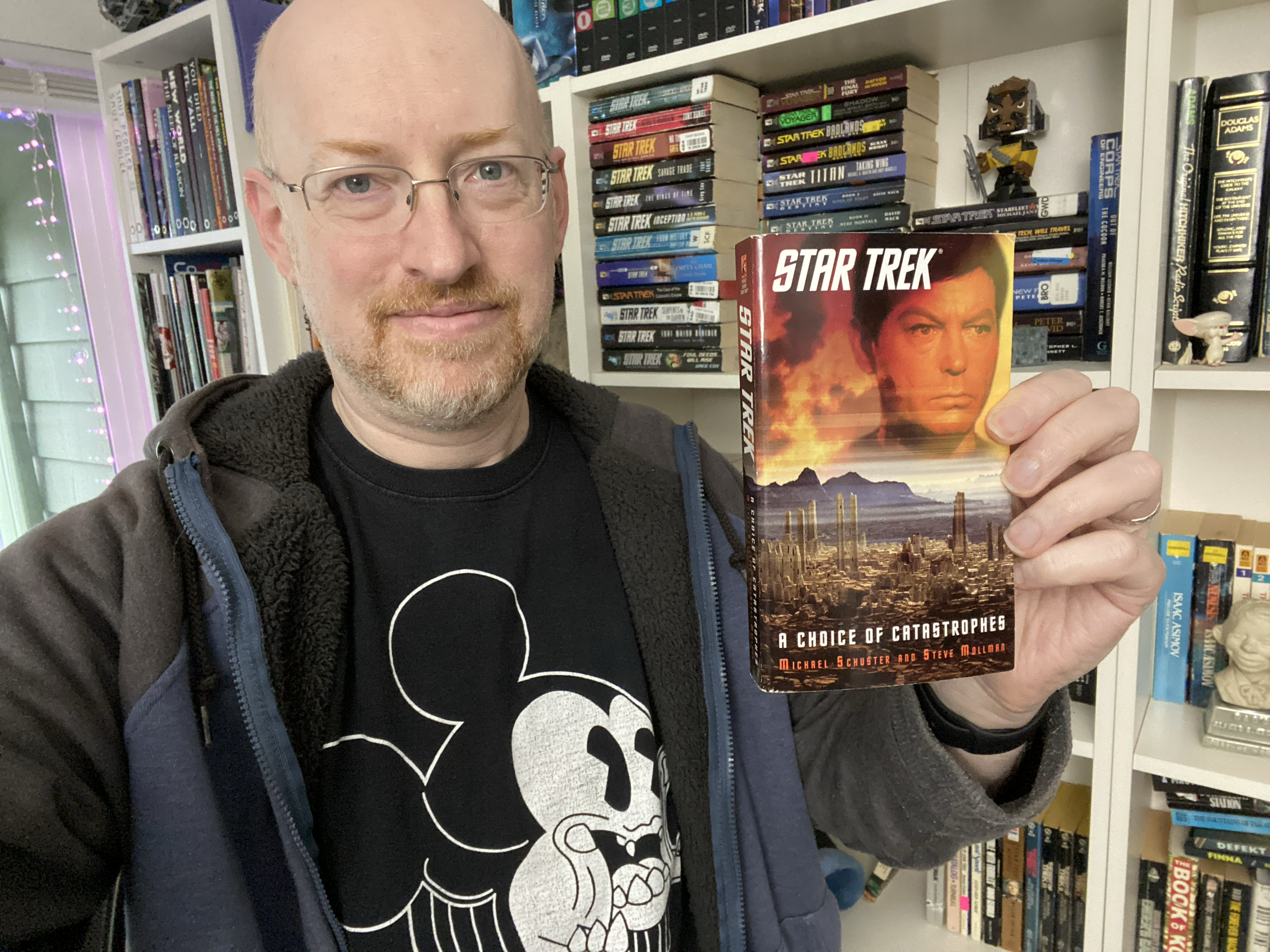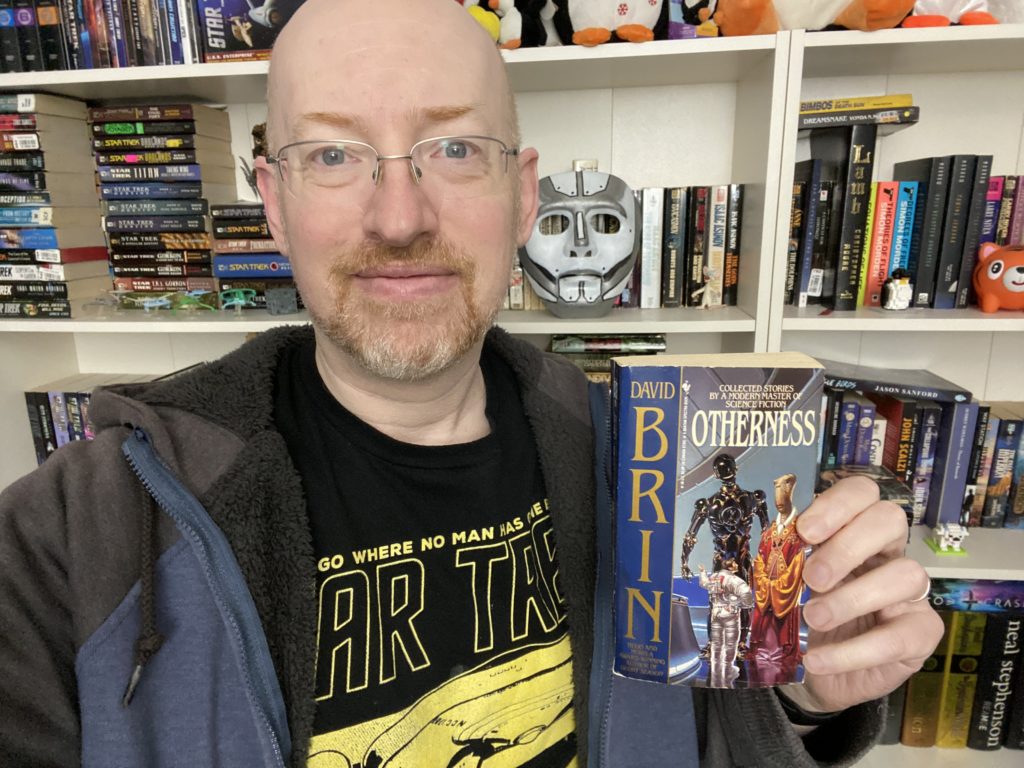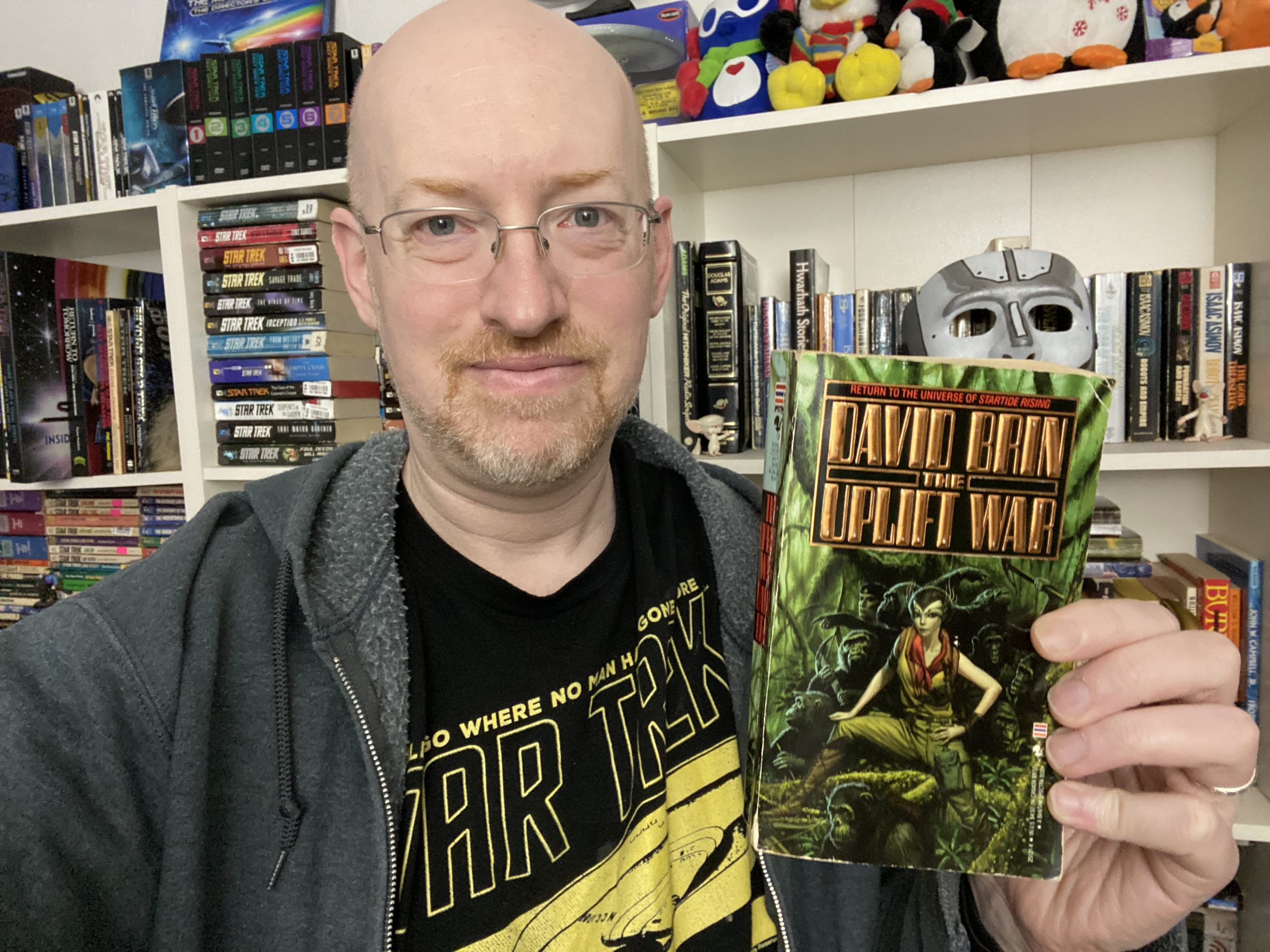Norwescon 45 is done, I’m back at home, and have had a day to rest and do the usual day-after duties (unpack, laundry, and various post-con website updates and scheduling social media posts). Our second year back was a good one and went smoothly from everything I could see, and was particularly good for me on a personal level.
On Wednesday, during the evening pre-con volunteer party, I was awarded a Lifetime Member award, given to ConCom members in recognition of years of contributions and hard work. It was a really wonderful surprise — this was something I’d thought I might achieve someday, but certainly hadn’t been expecting it. As many of the existing Lifetime members noted, there’s no escape now! :) Long-time photographer Thom Walls also received Lifetime Status.
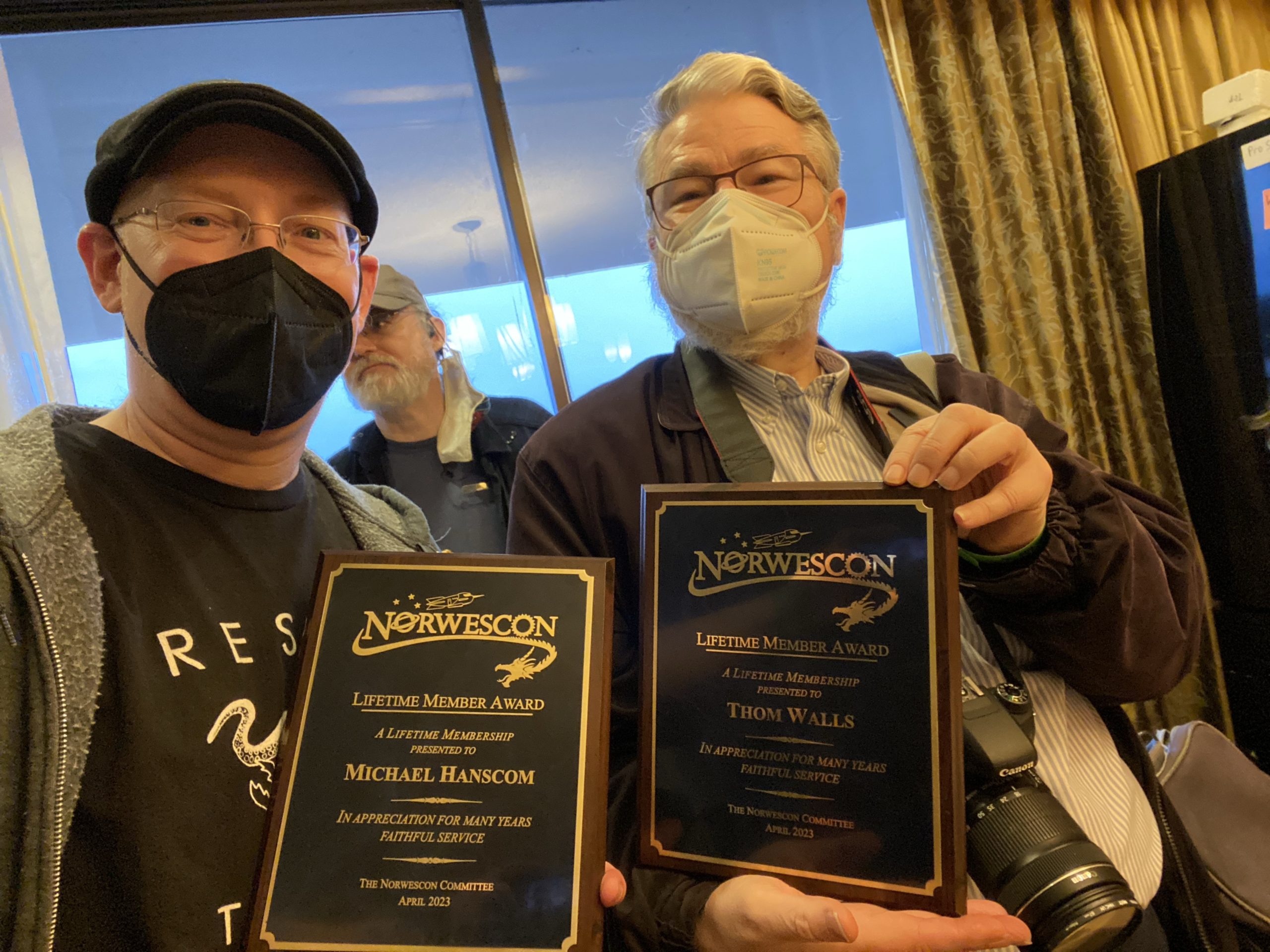
Thursday night marked the return of DJ Wüdi, as I let my alter-ego out for the Thursday night dance. The Thursday night dances may be the most sparsely attended, but I still had what I’d consider a good turnout, and those that were there seemed to be having a good time. I’d also had fun adapting the OBS graphics I’d created for my Twitch streams so that I could throw them up on the video wall behind me on stage, so I had a pretty good-looking setup as well. I snapped a quick pre-dance selfie, and hopefully one of the con photographers got some good shots of me and the full setup as things were going on. As usual, I recorded the full set and have it uploaded it to my MixCloud page.
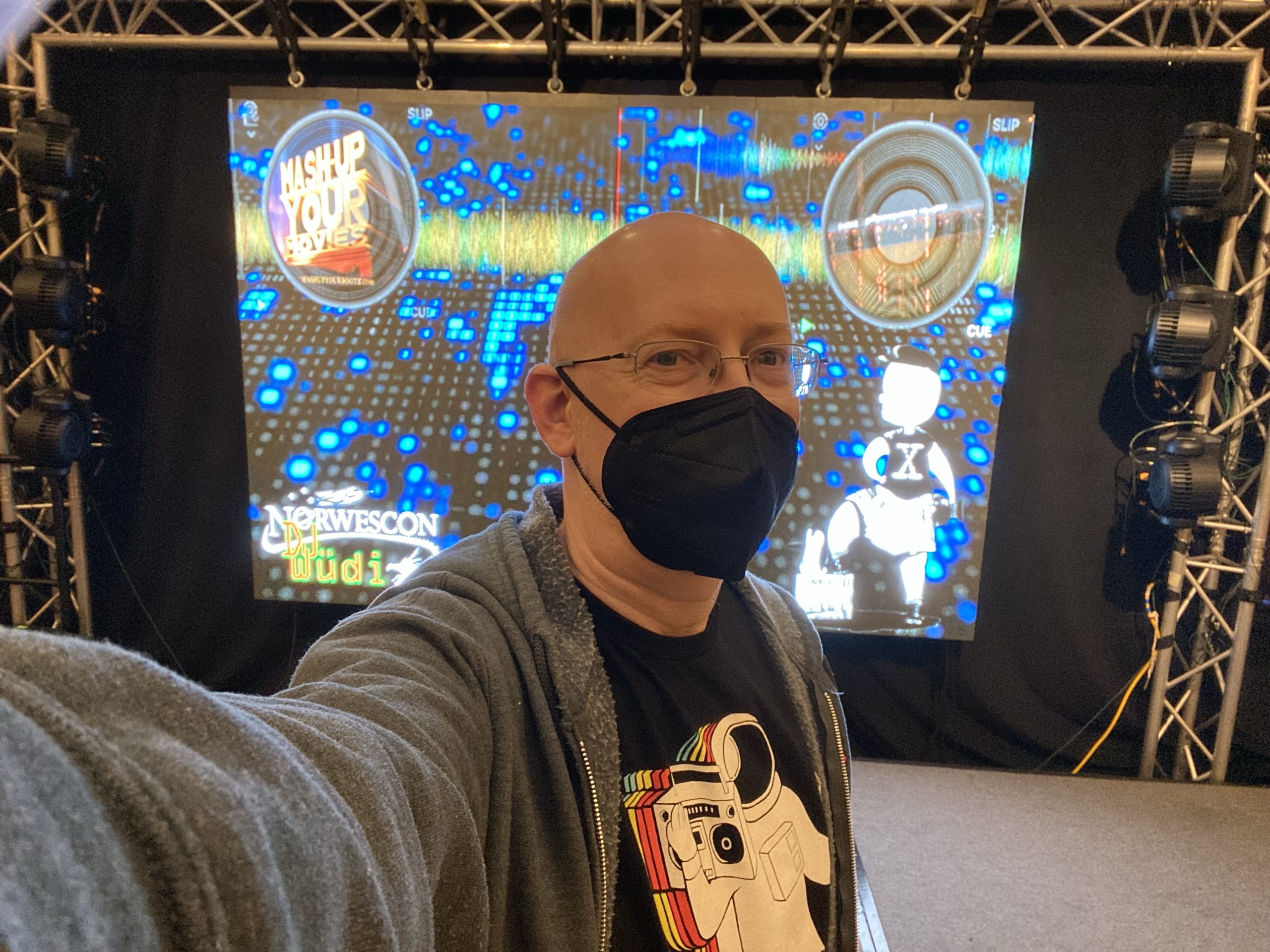
And Friday, of course, was all about the Philip K. Dick Award ceremony. Two of the nominated authors were able to join us this year, and so the first official-ish (-ish because for this, I was just a member of the audience) part of the day was the “All About the Philip K. Dick Award” panel, where the nominees and award administrator Gordon Van Gelder discussed the award and its namesake. Later that evening, after my inaugural Lifetime Dinner (an annual invite-only event for Lifetime members, Guests of Honor, PKD nominees, and Norwescon Exec Team members; until Wednesday evening, I’d thought my invite was only due to my position as PKD ceremony coordinator) was the award ceremony itself.
Happily, the ceremony went just fine, and I didn’t fall on my face, set anything or anyone on fire, or otherwise embarrass myself or the convention. So I’d say that’s a success! Both attendees read from their works, the other readers read from the works of those nominees who couldn’t attend, and then the winner was announced — and it was one of the two attending authors, which is always a lot of fun. The only downside is that a technical glitch dropped the audio from the first six minutes of the video stream of the ceremony, which was the section where I was talking, so there’s no good recording of my first time doing this. But as far as potential issues go, that’s really not that big, if a little personally disappointing. We’re going to work on using subtitles to approximate what I said, and it’ll do well enough.
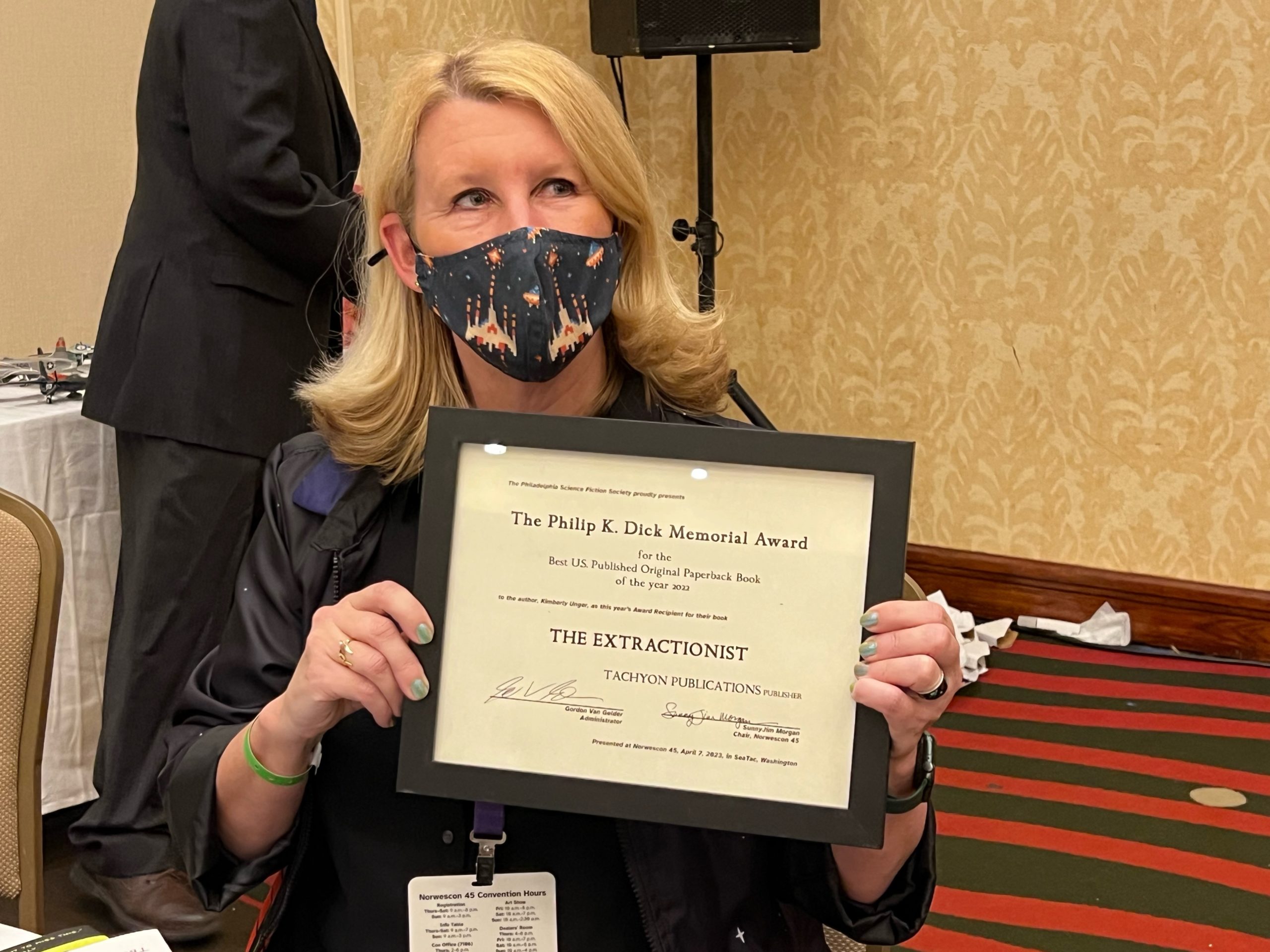
Saturday and Sunday, then, were fairly unscheduled days for me…though, somehow, I managed to find a surprising number of things that needed doing or that I could assist with. But even with that, I did make sure to get naps, food, and plenty of time hanging out, socializing, and being silly with friends old and new. And eventually, the closing ceremonies rolled around, and mid-afternoon on Sunday saw me packed up and heading home.
Other highlights: Being gifted some adorable wee little 3D-printed gnomes from one friend and a “LOOTR” (Loyal Order of the Ribbon) pin from Dragoncon from another, seeing a number of friends I hadn’t seen in a long time, soaking my feet in the hot tub one evening (must remember my swimsuit next year), dancing a lot at the two dances I wasn’t DJing for, and generally reveling in my annual geek vacation.
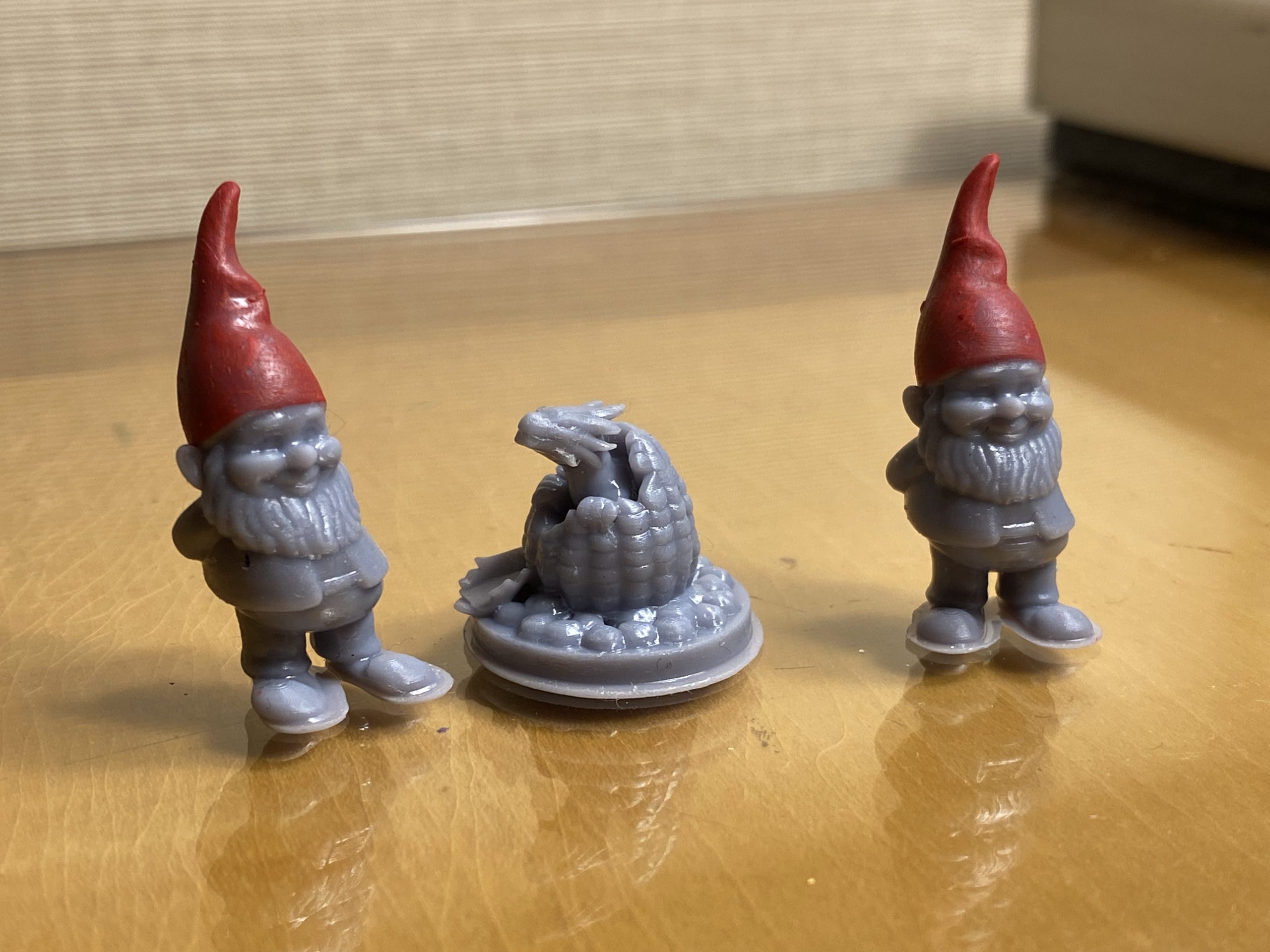

It’s been a good weekend. And now it’s less than a year until Norwescon 46!

